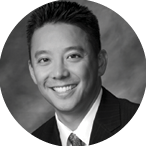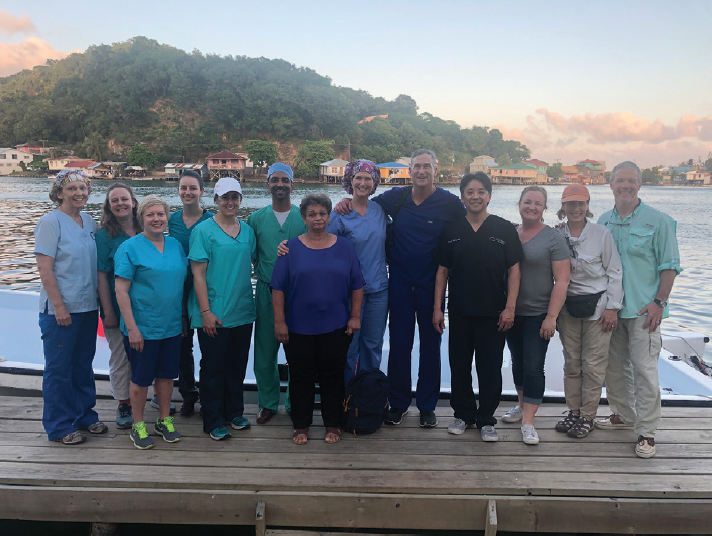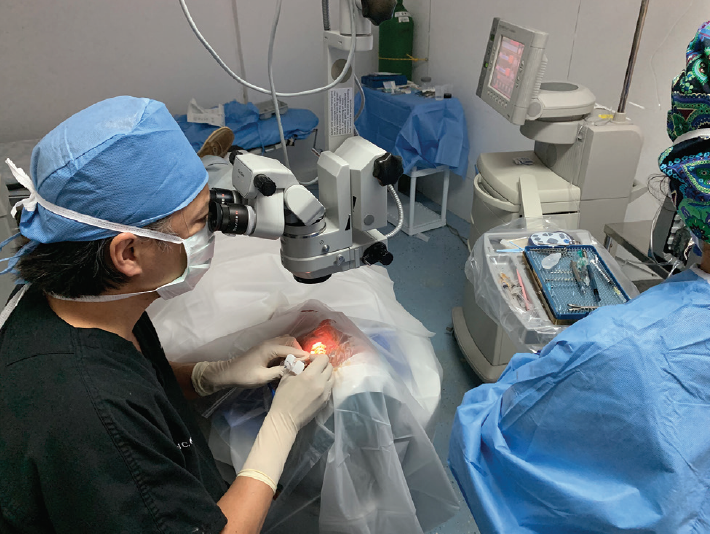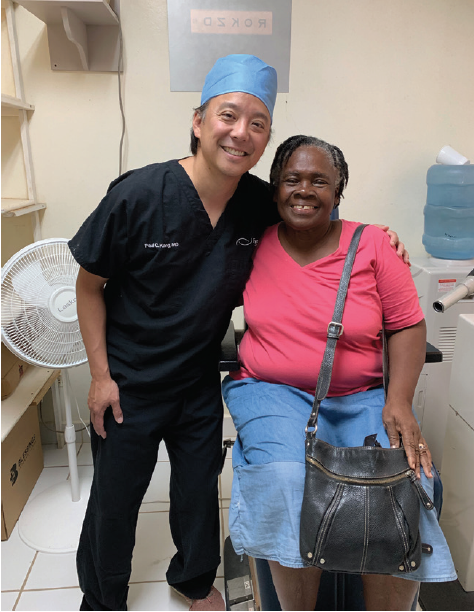Corporate Investors Can Relieve Much of the Administrative Burden
By Paul C. Kang, MD

In recent years, there has been a significant shift in the business dynamic of ophthalmology as more practices have been acquired by private equity. There has been much debate as to the potential pros and cons of these relationships; now that time has passed, it is possible to examine the actual ramifications.
My practice was acquired 2 years ago by Eye Care Services Providers (ESP), and my experience has been extremely positive. To provide context, I have been in private practice in the Washington, DC, area for 15 years. During that time, my partners and I grew our practice, Eye Doctors of Washington, from two offices to five, from six doctors to 12, and from about 30 employees to 100. Much of our growth was intentional, but much of it was also organic as we sought to address the needs of the increasing and aging population.
LESSENED THE BURDEN
Working with a corporate partner has lessened the administrative burden on the partners tremendously. As active partners, we were constantly meeting about issues regarding everything from the billing company to marketing, from human resources to information technology needs. There were seemingly endless fires to be put out (always temporarily), and this took much time away from seeing patients.
ESP has corporate management teams that address these issues. Often, due to economies of scale, ESP is also better equipped to handle the issues than we were as an individual practice. For example, when we were managing our practice ourselves, we were extremely involved in learning about compliance and regulatory issues such as the Merit-Based Incentive Payment System (MIPS), the Medicare Access and CHIP Reauthorization Act (MACRA), and other alphabet-soup programs. Now, with a corporate partner that wields more resources and takes greater responsibility for all of the practices under its umbrella, we are more confident that our practice is safely compliant.
PRACTICE BUILDING AND NEW TECHNOLOGY
I have heard others express concerns that working with a corporate partner can stifle practice growth. We have not found that to be the case. In fact, our practice is now busier than it was previously. With many of the administrative burdens lifted, I have more time and energy to focus on true practice-building activities such as meeting with referring doctors and seeing more patients. Meanwhile, the corporate partners are focused on making their practices more profitable. This means trying to find more ways to get their doctors busier, either through other complementary practice acquisitions or added marketing strategies.
Additionally, now as an employee with income based on a percentage of collections, my income has grown and become more predictable. Previously, a partner’s income was based on a set salary and then whatever was left over after taking into consideration capital expenditures and operating expenses. This can make one’s personal cash flow challenging to predict year to year. However, with income based on a percentage of collections, I do not have to make additional considerations, for example, when other doctors in our practice need to take unexpected time off for health or personal reasons.
Our practice had always been one to quickly adopt new technology. I was concerned that, with a corporate sponsor, this would no longer be the case. However, I have found that our practice philosophy has not been changed by the new arrangement. A corporate sponsor is concerned that integrating a new technology will provide a real improvement in outcomes without unnecessary increases in costs. I have found our private equity partners to be receptive to recommendations when we are able to create a compelling case for an acquisition.
MAKING ADJUSTMENTS
Although most of my day-to-day practice experience has been improved under this new arrangement, one area of adjustment for me has been the pace of implementing change. Previously, whenever we wanted to change a policy or procure equipment, a simple discussion with our practice manager would suffice. Now, there is a much more involved process regarding these types of issues.
On a humanitarian note, after we sold Eye Doctors of Washington to private equity I found that I had much more time to spend on other endeavors. I have since gotten involved with Health Insight Mission (www.healthinsightmission.org), which is dedicated to providing medical and vision services to people in Roatan, Honduras (Figures 1–3). Among other things, we are in the process of building an eye clinic on that island, which will be able to bring care to many individuals who would otherwise go without critical care. I have met a lot of fantastic people doing mission work in ophthalmology, and I am glad that I now have more opportunity to be part of this subculture and movement.

Figure 1. Dr. Kang with other volunteers on a mission trip in Honduras.

Figure 2. Dr. Kang performs surgery in Honduras.

Figure 3. Dr. Kang with a patient in Honduras.
Figures 1–3 courtesy of Paul C. Kang, MD
Overall, I am extremely happy with our practice’s decision to work with a corporate partner. There has definitely been a dynamic change, and it has largely been for the better.
Structural Changes and Continued Organic Growth
Elizabeth Yeu, MD

I’ve been a part of Virginia Eye Consultants (VEC) since 2013. At the time when I joined the practice, there were two locations and 13 doctors. Now, there are more than 20 of us in four locations. I became an equal equity owner among four partners in 2014.
The partners are very like-minded in that we all want to practice the best world-class medicine possible, offer best-in-class technologies for the right patients, and continue being mindful about our efforts. We all share this mentality.
I owe a great deal to my senior associates, who grew VEC from a small two-person practice into what it is today. They had a vision and big dreams, and they took on risk by building a large facility and expanding the practice. One of the senior partners even had to rent out his home and move into an apartment as part of financing that expansion.
The growth cycle of a practice can be difficult. Any profits and all the risk are shared among the equity owners, and as a result there can be growing pains. When there is a small equity group and a large practice, some years are going to be leaner than others.
THE NEXT STEP
About 3 years ago, we recognized that there were opportunities for growth by joining with external strategic partners. This type of change can take different forms: private equity, venture capital, shared or pooled risk, and models that are some amalgam of these forms. We did a pretty deep dive into the options, and we ended up interviewing about 16 private equity firms. The partners dedicated many evenings, once and sometimes twice a week, to this thought process about the strategic growth of the practice.
In the end, in January 2019, we joined with Cincinnati Eye Institute (CEI) under a management services organization (MSO) known as CEI Vision Partners (CVP). Our practice serves as the Mid-Atlantic hub for the organization, offering back-office and administrative services for other practices under us. CEI serves the same function as a Midwest hub.
WHAT HAS CHANGED
Aligning with CVP was a big structural change for the practice, but little has changed regarding our day-to-day practice. This was by design—it was one of the qualities that we were looking for in our investigation of the options. If we were going to have a partner, we didn’t want to compromise the level of care that we have always provided. Nor did we want decisions made in a corporate office and dictated down to us that would change the way we practice medicine on a daily basis.
Yes, there is now more structure, and we are all technically shareholders under the MSO but also employees of the practice. With that, there is more accountability for each of the shareholders. The compensation model is also different, and each shareholder takes home a specific percentage of our personal collections. There is no longer a shared component of the collections.
But in terms of the number of clinical staff and the morale of our practice, I’ve been pleased to see that little has changed. In fact, we’ve continued to experience good organic growth. Necessary funds are still being dedicated to marketing strategies, and we are still serving our patients with best-level care and investing in new technologies.
The administrative structure is different now because, as I noted, our practice is the Mid-Atlantic hub for the MSO, with other practices folded in under us. The CEO of our practice, therefore, now serves other roles within the MSO, and she travels to the other locations in that capacity. On the other hand, for me, there are fewer meetings to attend because the board structure is different. Many things the board had to deal with in the past are now handled at the level of the MSO.
ADVANTAGES OF THE NEW STRUCTURE
One positive is that we don’t have to worry as much about the cost of equipment or capital acquisition. Diagnostic technologies, for example, can be expensive, and the costs add up quickly when purchasing for four locations. But when that cost is being absorbed among all—not just among a small partnership group—there is less pain in that growth.
Another nice perk of having this larger organization is that we can share ideas more broadly. We are trying to determine best practices among the different groups so that we can learn and improve efficiencies among all. For example, there are certain things that the CEI team does extremely well, such as the way they run their ambulatory surgery center (ASC), and we are eagerly learning from them. Vice versa, there are things that VEC does well, and the CEI team has visited and observed us in order to bring those best practices to their locations.
LOOKING AHEAD
With the 15% cut in Medicare reimbursement for cataract surgery that is scheduled to take place this month, we must be looking to the future of the practice. Is fee-for-service reimbursement going away? Can we be shielded from these changes by being under the larger umbrella of this group? Can we negotiate contracts with insurers so that collectively, as best-practice physicians, we come together to garner better reimbursement? This is certainly what we hope.
Given the unpredictability of medicine, the protection inherent in a large group is of intangible value. Looking into the future, I feel that my clinical volume and job security will be much steadier under this model, and for that I am willing to risk the compromise in job satisfaction that may come with potential future liquidations or changes by the umbrella group.
The practice culture has not been marred by this corporate transition. It is very stable. There was hesitation and concern, but, now that we’re on the other side, things are going back to business as usual. Our staff members feel engaged within the work environment, and ultimately that will lead to better care of our patients and better customer service.




